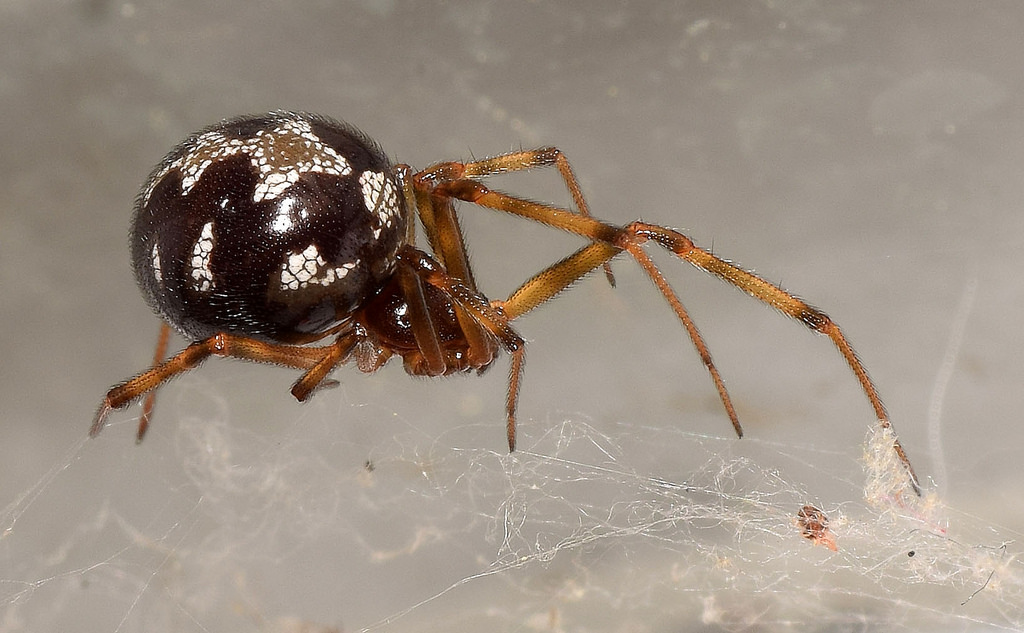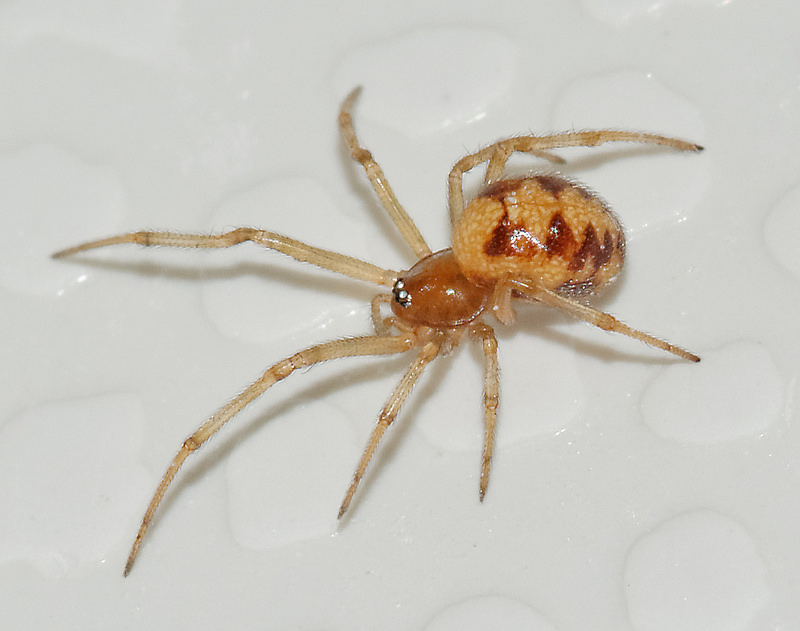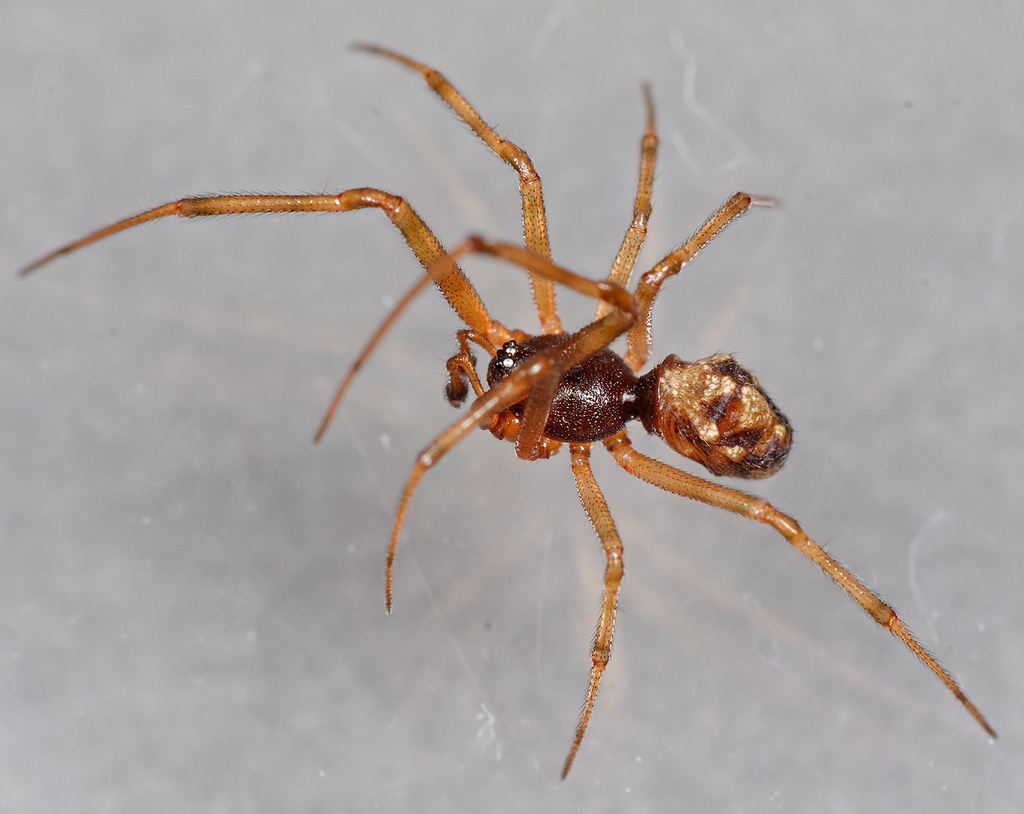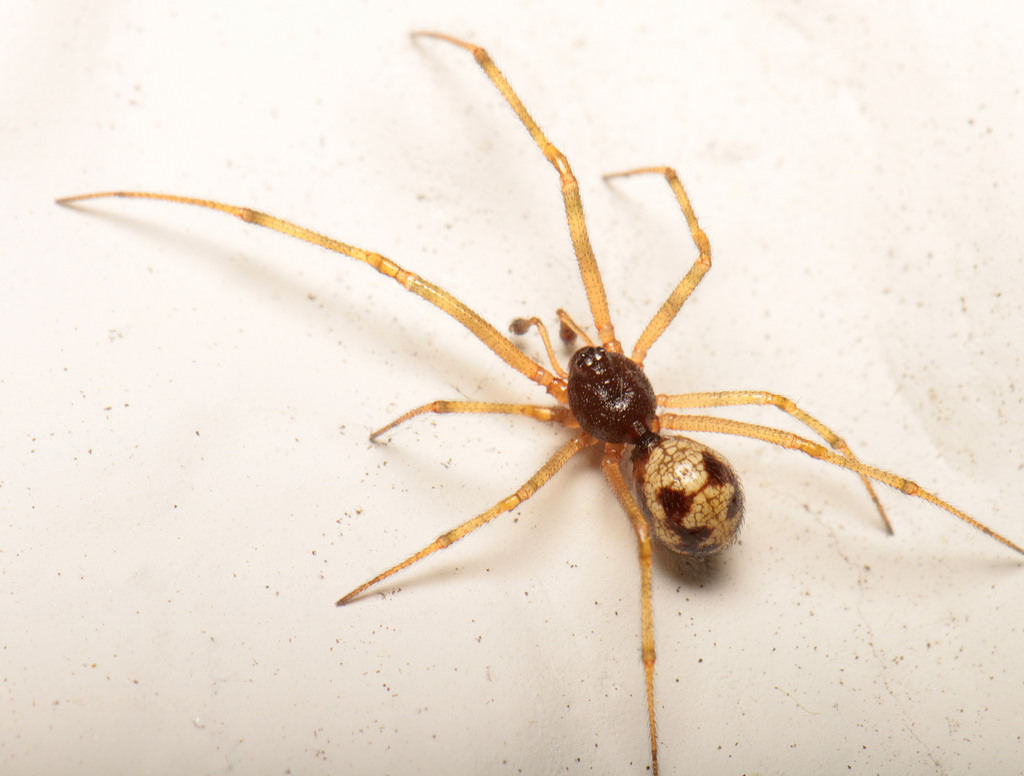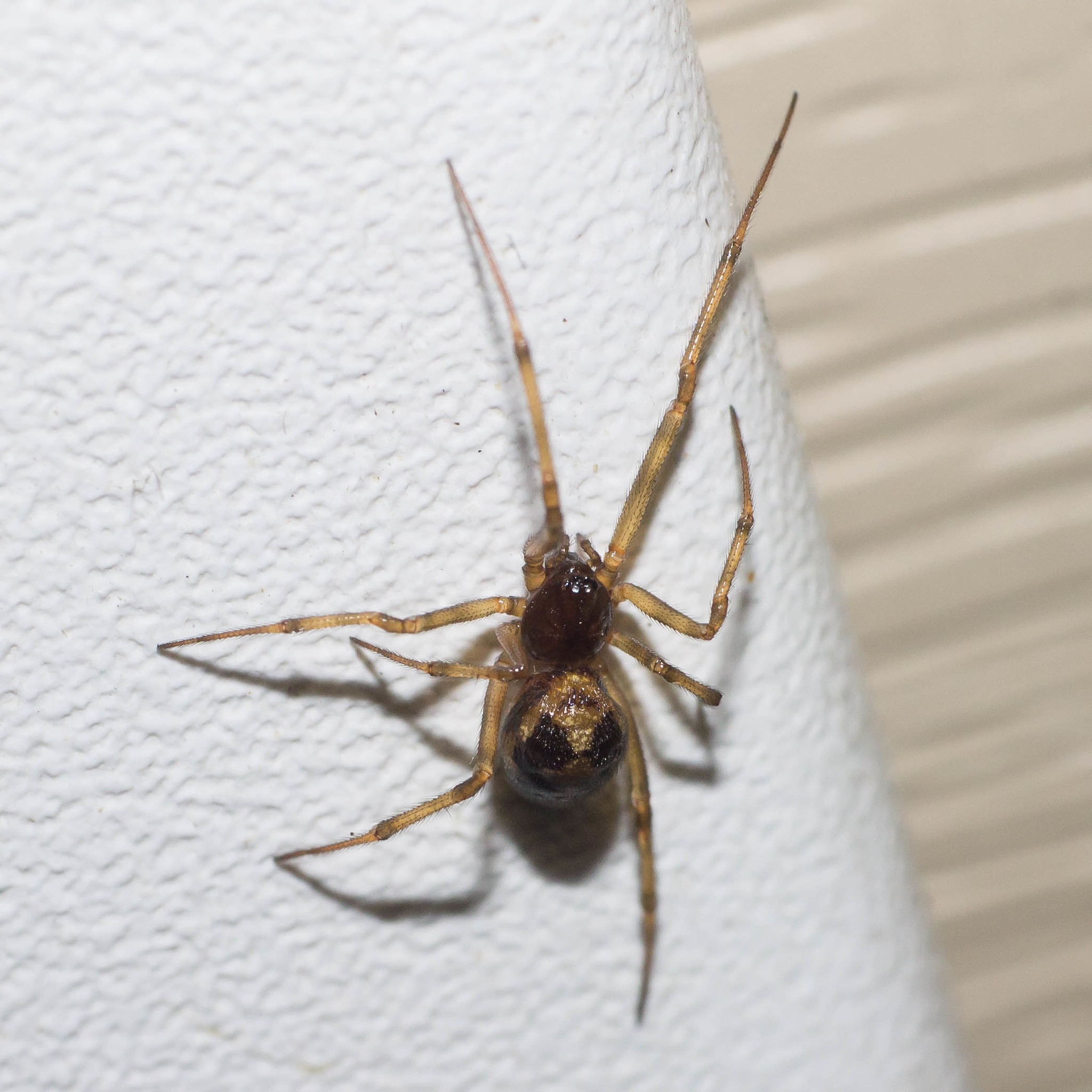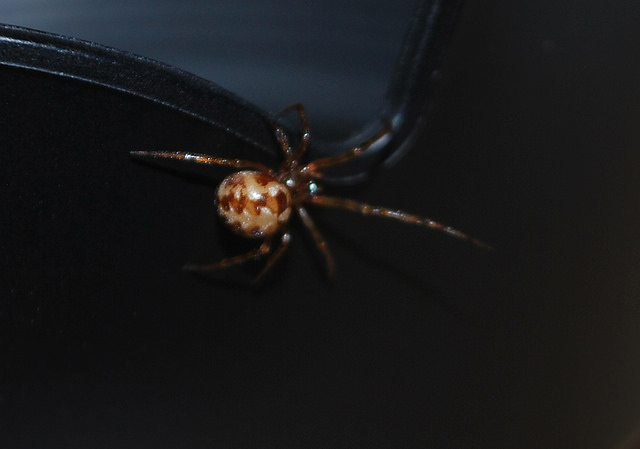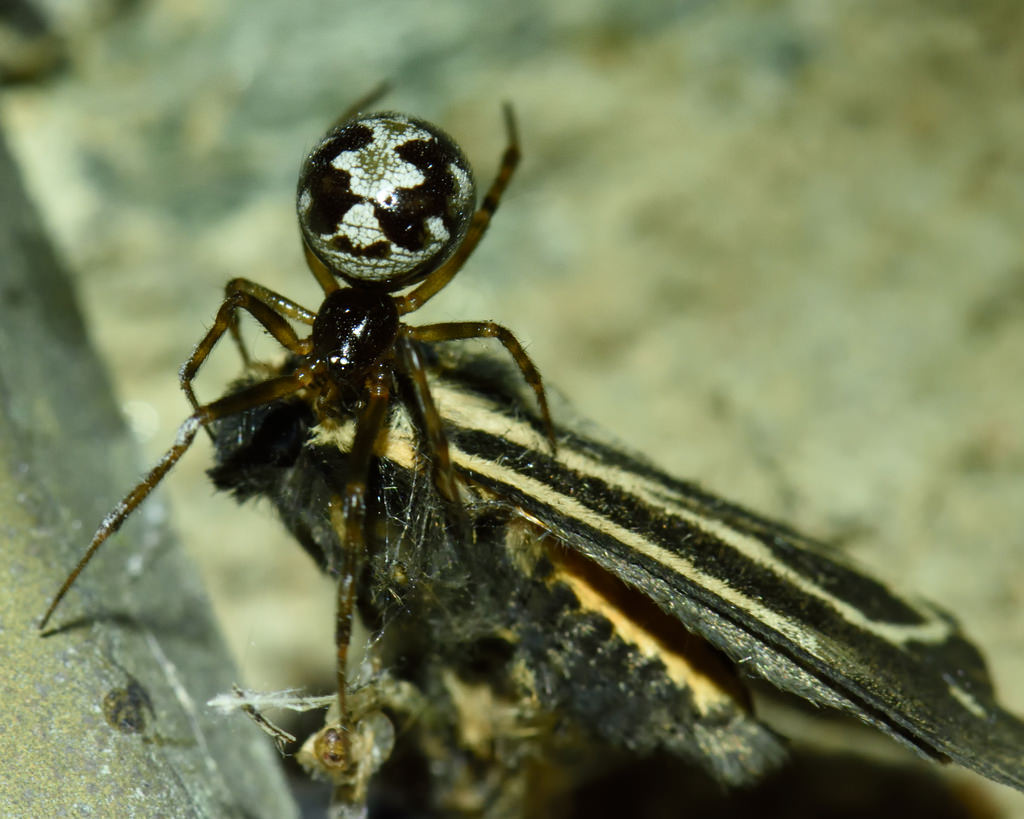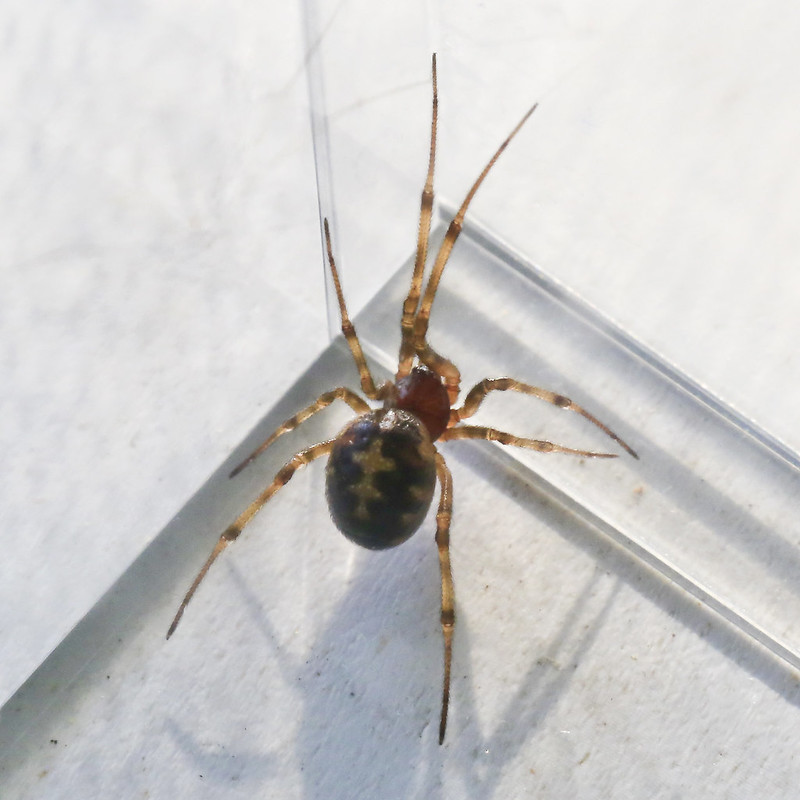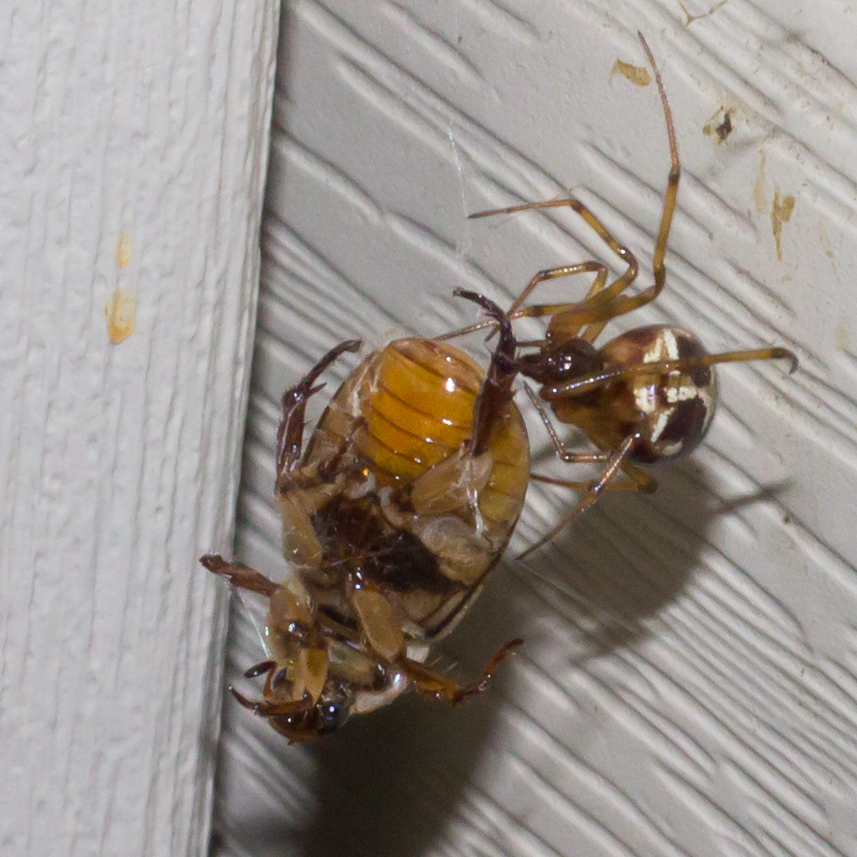Map Snapshot










23 Records
Seasonality Snapshot
Source: Wikipedia
This article needs additional citations for verification. (March 2018) |
| Triangulate cobweb spider | |
|---|---|

| |
| Scientific classification | |
| Domain: | Eukaryota |
| Kingdom: | Animalia |
| Phylum: | Arthropoda |
| Subphylum: | Chelicerata |
| Class: | Arachnida |
| Order: | Araneae |
| Infraorder: | Araneomorphae |
| Family: | Theridiidae |
| Genus: | Steatoda |
| Species: | S. triangulosa
|
| Binomial name | |
| Steatoda triangulosa (Walckenaer, 1802)[1]
| |
| Synonyms[1] | |
| |
The triangulate cobweb spider (scientific name: Steatoda triangulosa; also called the triangulate bud spider) is a common spider in the genus Steatoda. It is well known for the triangle-shaped pattern on the dorsal side of its abdomen.
Description
[edit]The adult female triangulate cobweb spider is 3 to 6 mm long (1/8 to 1/4 inch), with a brownish-orange cephalothorax and spindly, yellowish legs, and tiny hairs. The round, bulbous abdomen is creamy in color, with parallel purply-brown zigzag lines running front to back. This distinctive pattern sets it apart from other theridiids in its area.
The triangulate cobweb spider is known to prey on many other types of arthropods, ants (including fire ants), other spiders, pillbugs, and ticks. It preys on several other spiders believed to be harmful to humans, including the brown recluse. Anything it catches in the web it preys upon.
The egg sac of the triangulated cobweb spider is made from loosely woven silk, and is about the same size as the spider itself. Each egg sac contains approximately 30 eggs. They may reproduce via parthenogenesis. Cobweb spiders typically live on windows or in dark areas. They eat for a margin of their day and spend hours developing their web; it does not break if it is woven well. Below or in its web, there may be many dead insects, ranging from stinkbugs to other spiders including Lycosidae, to large Scutigera and even wasps. Of the Steatoda, they are the most voracious and prey-driven despite being one of the smaller species.
Taxonomy
[edit]The species was first described, as Aranea triangulosa, by Charles Walckenaer in 1802. It was transferred to the genus Steatoda by Tamerlan Thorell in 1873 (although it had been placed in the genus previously under the synonym Steatoda venustissima).[1]
Habitat and range
[edit]Similar to other members of the family Theridiidae, S. triangulosa constructs a cobweb, i.e. an irregular tangle of sticky silken fibers. As with other web-weavers, these spiders have very poor eyesight and depend mostly on vibrations reaching them through their webs to orient themselves to prey or warn them of larger animals that could injure or kill them. They are not aggressive to humans. There is one known case of human envenomation.[2] It will not kill a person unless an allergic reaction occurs.[3][4]
S. triangulosa is a cosmopolitan species. It is native to Eurasia, and has been introduced elsewhere including North America, Argentina, the Canary Islands, and South Africa.[1] This species is primarily a house spider, and builds webs in dark corners of buildings and other man-made structures.[citation needed]
References
[edit]- ^ a b c d "Taxon details Steatoda triangulosa (Walckenaer, 1802)", World Spider Catalog, Natural History Museum Bern, retrieved 2019-07-01
- ^ Pommier, Philip; Rollard, Christine; De Haro, Luc (2006). "Un cas de stéatodisme observé en Languedoc après morsure d'araignée du genre Steatoda". La Presse Médicale. 35 (12): 1825–1827. doi:10.1016/s0755-4982(06)74908-9. PMID 17159734.
- ^ Faúndez, Eduardo I.; Téllez, Fernando (June 2016). "Consideraciones sobre Steatoda nobilis (Thorell, 1875) en Chile". Biodiversity and Natural History. 2 (1): 13–15.
- ^ Faúndez, Eduardo; Carvajal, Mariom (2016-12-31). "The spider genus Steatoda Sundevall, 1833 (Araneae: Theridiidae) in the State of North Dakota (USA)". Revista Ibérica de Aracnología. 29: 83–85.
External links
[edit]- Triangulate Household Spider
- Steatoda triangulosa Images on BugGuide.net
- The World Spider Catalog
- University of Arkansas Arthropod Museum Notes: Triangulate cobweb spider
- https://web.archive.org/web/20060314011949/http://www.puyallup.wsu.edu/plantclinic/resources/pdf/pls107steatodaspider.pdf
- Penn State University Dept. of Entomology: Commonly Encountered Pennsylvania Spiders
- Levi, H.W. 1957. The spider genera Crustulina and Steatoda in North America, Central America, and the West Indies (Araneae, Theridiidae). Bull. Mus. Comp. Zool. 117(3):367-424
- Descriptions of four Steatoda species found in New Zealand
- pictures
- Hobospider.com: Steatoda spiders as competitors/predators of the hobo spider
